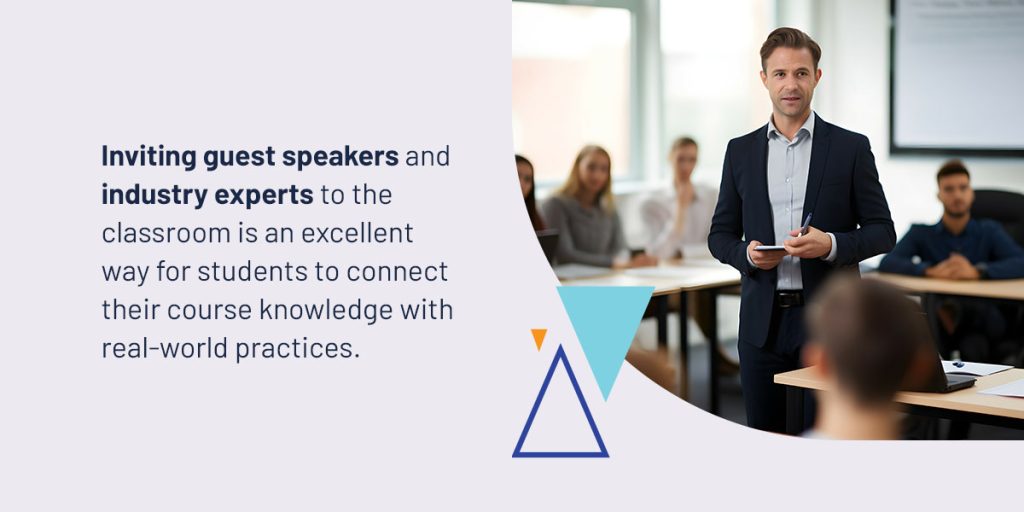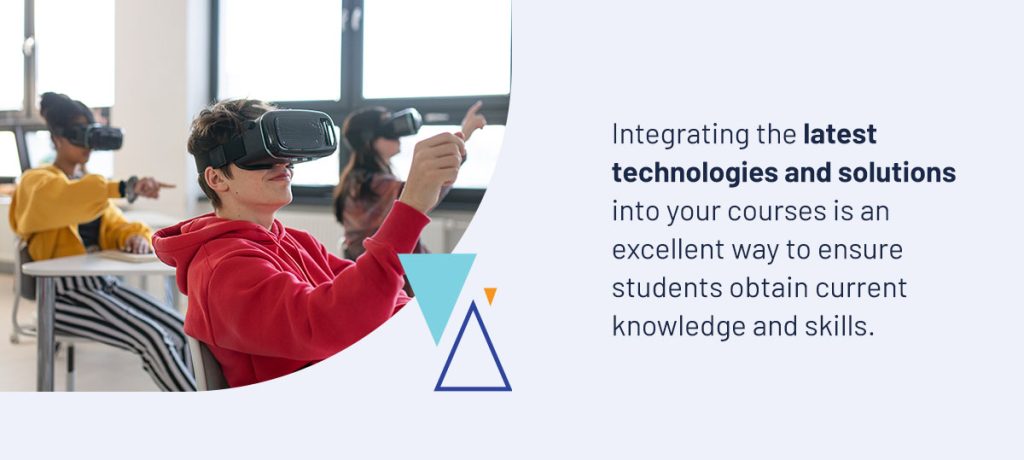
Career placement is a weighty consideration for students entering college. Students and parents want to know that the program they choose to join will teach them what they need to know to pursue a particular career. Curriculum mapping can clearly show the connection between education programs and occupations.
Why is it important to match program curricula to occupations?
Matching a program’s curriculum to relevant occupations sets current students up for success. It also encourages applicants to trust you to help them attain their career aspirations. Higher education is a huge investment, and students want to know that they will likely see a return on it.
Using curriculum maps, you can strengthen the alignment between the workforce sectors and postsecondary education. Curriculum alignment that starts with data analysis is critical, whether part of a traditional or competency-based education program. Using analysis tools, colleges and universities can establish stronger ties with employers while keeping student learning relevant to the competencies the industry demands.
Taking direction from this curriculum, employers can customize their job ads to include required academic competencies, thus creating bidirectional partnerships where each party makes a valuable contribution.
What is curriculum mapping?
Curriculum mapping is the process of diagramming a curriculum to address misalignments, redundancies, and academic gaps to improve a course’s effectiveness and coherence. Curriculum mapping aims to ensure that all teaching is structured logically across grade levels, so students can progress by building on what they’ve learned previously. The curriculum mapping process has many purposes and benefits, including improving program coherence, increasing student engagement, enhancing collaboration, encouraging reflective practice, and aligning instruction with desired learning outcomes. Leveraging these benefits and redesigning course structures empowers you to deliver exceptional educational value that can connect your programs to career skill sets and demands.
How can curriculum mapping connect college programs to career skill sets and demands?
Curriculum mapping is part of an ongoing assessment process of programs and courses. It allows administrators, employees, and students to get on the same page regarding the relationship between learning outcomes and what students do in courses and programs. The process of curriculum mapping ensures that you systematically align the curriculum with program outcomes.
Most students have an idea of their future careers after high school. Their decisions during tertiary education can significantly affect their future careers. Leveraging each student’s career enthusiasm and creating a link between their curriculum and their aspirations for the future is critical. Curriculum mapping connects classroom learning with workplace relevance, resulting in many learning outcomes, such as resilience and professional goal-setting.
Curriculum mapping allows teachers to integrate career-focused elements into student courses in several ways, including simple classroom discussions. Broad exposure to potential careers gives students a solid idea of what they can do following their undergraduate studies and allows them to make informed decisions about their future careers. You can empower students to connect their college coursework to their career demands by:
1. Creating content around career-focused topics
Although each course should aim to provide real-world skills, it can benefit your students to ensure instructors are providing current and relevant information and finding ways to bring students face-to-face with applications and opportunities. There are several ways institutions can further connect course content with career topics and skills.

Inviting guest speakers and industry experts to the classroom is an excellent way for students to connect their course knowledge with real-world practices. These guests can reinforce the importance of specific topics and provide opportunities for students to ask unique questions about entering the field or specializing in a specific focus.
Instructors can also welcome career-focused discussions in the classroom. Whether a professor has industry experience they discuss, students bring industry news to the beginning of each class, or educators post online discussion boards for students to discuss their goals and experiences, these small conversations can go a long way to align students with their career paths.
2. Integrating career resource services
Implementing career resource services can also better align students with their future careers. Whether courses create modules to encourage students to visit your institutional career center or educators provide students with access to online career resources, these services can help students define their path and find the support they need as they progress. Resources like labor market data can aid in decision-making when it comes to deciding on a minor, specialization, and similar focus areas. This information can also highlight your institution as being up-to-date, encouraging students to feel more confident in their education and learning outcomes.
3. Expanding training with employers
Fundamental topic knowledge is essential for nearly every higher education degree or program. However, related skill sets are also valuable in most industries. Your institution can encourage students to obtain and hone these skills in a variety of ways.
For example, you could create courses or assignments that align with an internship opportunity. Perhaps students can opt for an internship rather than a lower-level class, giving them the opportunity to take charge of their future and gain industry skills and connections. If an internship program or opportunity isn’t possible, your institution could consider a mentorship program to encourage students to have one-on-one conversations with someone related to their field.
Educators can also work with local employers or facilities to implement job shadowing or live discussions and watch sessions. For example, education-related programs could partner with a local school to partner students with a teacher one day a week. Medical field-related students could visit local hospitals or clinics and watch as practitioners navigate daily challenges. Trade school students can visit local businesses to evaluate the kind of projects that are most common in the area. Any of these experiences can help students connect with their future careers while providing first-hand experiences to grow their skill set.
4. Ensuring familiarity with advancing technologies

Technology is constantly evolving across every industry. With the rise of artificial intelligence solutions, many processes are changing. Integrating the latest technologies and solutions into your courses is an excellent way to ensure students obtain current knowledge and skills. Along with saving time by avoiding outdated content, leveraging this technology will ensure students have an understanding of the technologies they will interact with post-graduation. Using these resources will provide students with hands-on experience before they graduate to prepare them for work within their field.
A comprehensive curriculum map can help faculty and educators determine which pieces of equipment and technology will be most beneficial for a course or program to make the most of institutional resources while supporting student success.
Connect college programs and careers with Watermark
We know how important it is to foster career readiness skills for college students, and institutions of higher learning can benefit from emphasizing collaboration and empowering curricula. Using an intuitive curriculum management workflow with the right software, you can link curricula to learning outcomes.
Ready to streamline your curriculum strategy and demonstrate the connection between college and career? Watermark software allows students to see their workload throughout their college experience. Together with Watermark Planning & Self-Study, you can take a holistic approach to curriculum mapping, ensuring you set students up for success — academically and throughout their careers.
Understanding the progression of their workload helps students focus on career readiness skills based on their academic trajectory and learning outcomes. Request a demo to learn more about building a curriculum that empowers students today!















































































































































































































































































































































































































